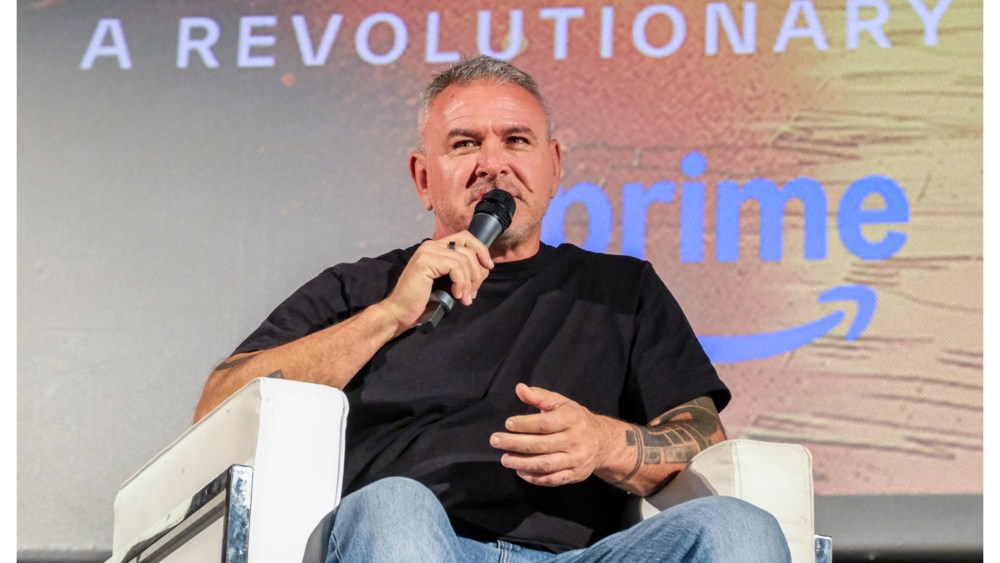Tim Miller on His Videogame Inspired Animated Series ‘Secret Level’
Amazon’s “Secret Level,” the animated anthology series from “Deadpool” director and “Love, Death & Robots” creator Tim Miller, takes popular (mostly video) games and tells short stories set in their universes. Miller sat down with Variety at the Lucca Comic and Games convention, his first visit to the Italian fest.
What do you think of Lucca?
How much better is it to walk through ancient streets than it is to walk through a convention center? As much as I like San Diego, this is amazing. It’s great to see the culture blossoming. It used to be this little secret thing in dingy rooms, and now the whole world loves the same things I do. And you see these moms, dads and kids dressed up. A whole generation has grown up in this culture.
What’s the inspiration behind “Secret Level”?
It seems like a simple idea: Take characters from video games and tell original stories. It’s what my company Blur has been doing for almost 30 years now. When I sold “Love, Death & Robots” to Netflix, I played a reel of game animation from Blur studio and said, “Give us some money and we’ll give you more shit like this.” Here we have 15 different games, and so we get the fanbase from all those games from “Warhammer” to “Sifu.” It’s a tide that will lift all the boats in this harbor.
How difficult is it to adapt games?
You want to honor the game, but you also don’t want to make the material so niche it doesn’t include people who haven’t played the game. We’re working very closely with the developers. They give us the lore and tell us what the fans find interesting. We approached these writers from “Love, Death & Robots.” Many play games, so they had affinities for specific games. They pitch us stories set in these worlds. We pick the best. They write a prose version of the story, a short story, basically. John Scalzi wrote one, and Peter Watt wrote the “Armored Core” episode. He’s one of the most interesting science fiction writers out there. It’s different voices from a wide variety of genders, ethnicities and backgrounds. It’s not just two white guys sitting in a room.
What affects the look of the animation?
The feel of individual episodes is a refined version of what you see if you play the game. But with “Mega Man,” or “Pac Man” for instance, the door’s open to do anything because there’s not one look. Then we go into “Love, Death & Robots” mode of what’s the coolest way we can tell a story?
With “Dungeons & Dragons” there’s been a recent film treatment.
We weren’t worried about stepping all over that. Here, the developer told us the focus needed to be on this five-headed dragon. They said: “We want a dragon like you’ve never seen fucking dragons before.” That was the goal of the short.
Do you look at other videogame movies for inspiration?
No, honestly, I don’t. In the past either Hollywood didn’t understand the game, or they tried to cater to the fan base. It was the same problem with “Deadpool.” I always feel very confident about that, because I’m a nerd, so I’m trying to do what I would want to see as a nerd. Now, my “Terminator” movie didn’t exactly set the world on fire, even though I approached it with that principle, which goes to show…
How did that feel?
Nobody sets out to disregard someone’s closely held childhood dreams. It’s no cause for vitriol. A lot of people didn’t like “Terminator: Dark Fate” for reasons I had nothing to do with. One, because it was the sixth film and another because we killed John Connor at the start, but if Jim Cameron wants that to happen – which I agree with by the way – then that’s what you do.
What’s the next level?
The game developers said, “We enjoyed this process so much. What do you want to do next?” So hopefully, Amazon sees the potential to bring to this gaming audience a new way to enjoy their characters and worlds.
This interview has been edited and condensed for clarity.


